FREE SHIPPING On Cont. U.S. Orders Over $79

Sodium Requirements for Athletes - Plus 10 Natural Sources of Sodium
If you've ever completed a grueling workout leaving you drenched in sweat, you may have inadvertently gotten some sweat in your mouth. Did you ever notice a salty taste? That's the mineral sodium being excreted from your body through sweat.
Sweating regulates temperature by cooling our body and preventing overheating. While sweating is an important mechanism for maintaining homeostasis in the body, it can cause your sodium levels to drop. Significant decreases in sodium may result in numerous unwanted and potentially dangerous side effects if not restored.
Related: The Salty Lie - Is Your Daily Salt Intake Really Too Much?
As an athlete, we need to replenish not only our fluid stores after intense exercise, but also the critical electrolytes sodium, chloride, potassium, magnesium, and calcium. The focus of this article is on sodium, one of the most abundant electrolytes in the body one that is also excreted rapidly during exercise.
Unfortunately, sodium has gotten a bad rap in both the fitness industry and mainstream media as the primary contributor to high blood pressure and health complications. While excessive sodium intake is not ideal for the average individual who is overweight and relatively inactive, active people NEED sodium to perform optimally on the field, in the weight room, and during recovery periods.
This article examines the impact of sodium intake on exercise performance and well-being as well as provides a list of foods naturally high in this critical mineral.
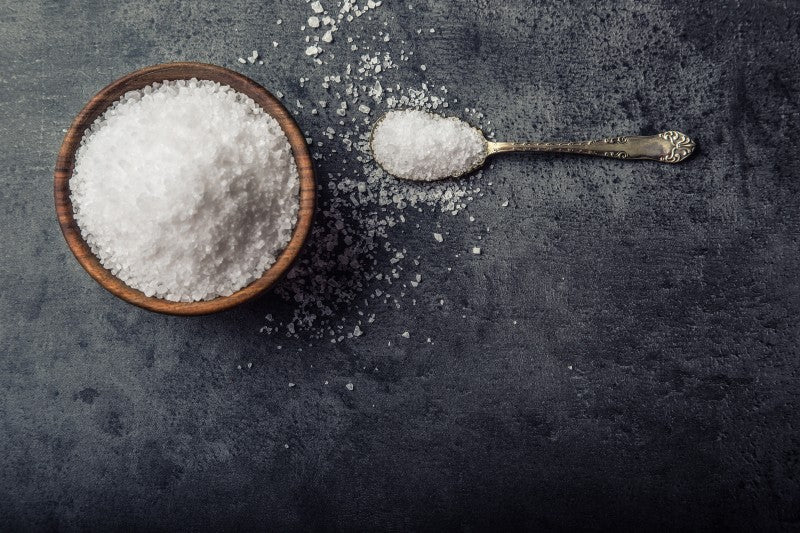
Sodium is an electrolyte, which means it carries an electrical charge. it's found in your blood, urine, and other bodily fluids. [2] As you can tell sodium is critical everywhere throughout the body.
The kidneys help to regulate sodium levels in the body. If sodium levels are high the kidneys will expel the excess through urine and sweat. For the extra sodium to be removed from the body adequate fluid intake is also required.
If sodium intake is high and liquid intake is low, then the kidneys may not be able to remove sodium at a sufficiently fast rate which results in sodium buildup in the blood. This can increase the body's blood pressure temporarily and if left untreated for an extended period may cause chronic high blood pressure. [1] High blood pressure can cause numerous life-altering health problems.
As athletes, we should not shun sodium and chug water, as this can throw off the electrolyte balance in our body. A lack of sodium, paired with excess fluid intake can result in overhydration which also negatively affects your health and athletic performance.
The recommendation for the general population is to not exceed 2,400 milligrams of sodium per day but athletes are not average. We exercise more frequently and thus we expel more liquid and sodium through our sweat. The rate of sodium you lose per hour of exercise depends on ambient temperature, body weight, gender, exercise intensity, baseline sodium levels, and fluid levels as well as numerous other components.
One study found that people working in hot conditions for 10 hours lose between 4,800 and 6,000mg of sodium which is equivalent to 12,000 to 15,000mg of sodium chloride (table salt). [3] If we scale this to an individual performing one hour of intense physical activity, this equates to between 480 and 600mg of sodium or 1,200 to 1,500mg of table salt.
don't be afraid of consuming sodium pre, intra, and post-workout to replace this essential electrolyte lost during exercise.
While table salt is not technically a food, it's one of, if not the best natural source of sodium on the planet. Just one teaspoon of table salt contains zero calories but 2,325 milligrams of sodium. [4]
When shopping for table salt be sure to select the iodized variety. In the past few years, the general population has avoided iodized table salt in favor of non-iodized sea salt varieties. While both forms of salt provide sodium, iodized salt provides iodine, a critical nutrient for normal thyroid function.
For a 180-pound individual, this equates to approximately 16.5 to 24.5 grams of baking soda. This is a large quantity of baking soda and many experience laxative effects which such a large dose so slowly increase the dosage and stay close to a bathroom as your body acclimates to the substance.
One-half cup of dried and salted jellyfish provides 2,810 milligrams of sodium but contains only 10 calories, zero carbohydrates, less than 0.5 grams of fat, and 1.6 grams of protein. [6] Look for this product at your local ethnic or natural foods grocery stores.
Those with a gluten allergy or intolerance should stick to tamari, a soy sauce made only with soy, that provides 1,005 milligrams of sodium, 11 calories, 1.9 grams of protein, one gram of carbohydrates, and zero fat per tablespoon. [8] Soy sauce also contains electrolyte minerals magnesium, potassium, and calcium.
One cup of condensed black bean soup provides a whopping 2,493 milligrams of sodium as well as 234 calories, 12.4 grams of protein, 3.4 grams of fat, 39.6 grams of carbohydrates, and a whopping 17.5 grams of fiber. [9] Combine your black bean soup with rice to create a complete protein source that aids in recovery after an intense workout.
You can't go wrong with a ham, cheese, and mustard panini after a brutal weightlifting session.
Pickled eggplant is a superstar when it comes to sodium content. Just one cup provides a hefty 2,277 milligrams of sodium for just 67 calories, 1.2 grams of protein, less than one gram of fat, 13.3 grams of carbohydrates, and 3.4 grams of fiber. [11] Making pickled eggplant yourself is extremely easy, safe, and inexpensive.
It also contains 238 calories, 16.1 grams of protein, 15.8 grams of fat, and 7.9 grams of carbohydrates. Adequate phosphorus and calcium consumption is critical for maintaining bone health and fighting osteoporosis.
Jalapeños taste great on pizzas, nachos, mixed into cornbread, and incorporated into rice dishes.
One cup of pickles provides 1,872 milligrams of sodium for just 17 calories, 0.5 grams of protein, less than 0.5 grams of fat, 3.5 grams of carbohydrates, and nearly 2 grams of fiber. [13] The brine the cucumber soaks in is commonly consumed by athletes to prevent or stop muscle cramps due to its high sodium content.
What is your favorite high-sodium and minimally processed food? Let me know in the comments below!
2) "Fluid and Electrolyte Balance." MedlinePlus, U.S. National Library of Medicine, 21 Dec. 2016, Accessed Jan. 2017.
3) Bates, Graham P, and Veronica S Miller. ?Sweat Rate and Sodium Loss during Work in the Heat.? Journal of Occupational Medicine and Toxicology (London, England) 3 (2008): 4. PMC. Web. Jan. 2017.
4) "Basic Report: 02047, Salt, table." National Nutrient Database for Standard Reference Release 28. United States Department of Agriculture, May 2016. Web. Jan. 2017.
5) Frank, Kurtis, et al. "Sodium Bicarbonate - Scientific Review on Usage, Dosage, Side Effects." Examine.com, 2017, Accessed Jan. 2017.
6) "Basic Report: 43497, Jellyfish, dried, salted." National Nutrient Database for Standard Reference Release 28. United States Department of Agriculture, May 2016. Web. Jan. 2017.
7) "Basic Report: 16123, Soy sauce made from soy and wheat (shoyu)." National Nutrient Database for Standard Reference Release 28. United States Department of Agriculture, May 2016. Web. Jan. 2017.
8) "Basic Report: 16124, Soy sauce made from soy (tamari)." National Nutrient Database for Standard Reference Release 28. United States Department of Agriculture, May 2016. Web. Jan. 2017.
9) "Basic Report: 06002, Soup, black bean, canned, condensed." National Nutrient Database for Standard Reference Release 28. United States Department of Agriculture, May 2016. Web. Jan. 2017.
10) "Basic Report: 10183, Pork, cured, ham, boneless, extra lean and regular, roasted." National Nutrient Database for Standard Reference Release 28. United States Department of Agriculture, May 2016. Web. Jan. 2017.
11) "Basic Report: 43146, Eggplant, pickled." National Nutrient Database for Standard Reference Release 28. United States Department of Agriculture, May 2016. Web. Jan. 2017.
12) "Basic Report: 11632, Peppers, jalapeno, canned, solids and liquids." National Nutrient Database for Standard Reference Release 28. United States Department of Agriculture, May 2016. Web. Jan. 2017.
13) "Basic Report: 11941, Pickles, cucumber, sour." National Nutrient Database for Standard Reference Release 28. United States Department of Agriculture, May 2016. Web. Jan. 2017.
Sweating regulates temperature by cooling our body and preventing overheating. While sweating is an important mechanism for maintaining homeostasis in the body, it can cause your sodium levels to drop. Significant decreases in sodium may result in numerous unwanted and potentially dangerous side effects if not restored.
Related: The Salty Lie - Is Your Daily Salt Intake Really Too Much?
As an athlete, we need to replenish not only our fluid stores after intense exercise, but also the critical electrolytes sodium, chloride, potassium, magnesium, and calcium. The focus of this article is on sodium, one of the most abundant electrolytes in the body one that is also excreted rapidly during exercise.
Unfortunately, sodium has gotten a bad rap in both the fitness industry and mainstream media as the primary contributor to high blood pressure and health complications. While excessive sodium intake is not ideal for the average individual who is overweight and relatively inactive, active people NEED sodium to perform optimally on the field, in the weight room, and during recovery periods.
This article examines the impact of sodium intake on exercise performance and well-being as well as provides a list of foods naturally high in this critical mineral.

Sodium?s Impact on Exercise Performance and Well-Being
Sodium is a critical mineral your body requires not only for optimal exercise performance but also for normal bodily function. Sodium ensures nerves and muscles function appropriately and maintains the correct fluid balance in your body. [1]Sodium is an electrolyte, which means it carries an electrical charge. it's found in your blood, urine, and other bodily fluids. [2] As you can tell sodium is critical everywhere throughout the body.
The kidneys help to regulate sodium levels in the body. If sodium levels are high the kidneys will expel the excess through urine and sweat. For the extra sodium to be removed from the body adequate fluid intake is also required.
If sodium intake is high and liquid intake is low, then the kidneys may not be able to remove sodium at a sufficiently fast rate which results in sodium buildup in the blood. This can increase the body's blood pressure temporarily and if left untreated for an extended period may cause chronic high blood pressure. [1] High blood pressure can cause numerous life-altering health problems.
As athletes, we should not shun sodium and chug water, as this can throw off the electrolyte balance in our body. A lack of sodium, paired with excess fluid intake can result in overhydration which also negatively affects your health and athletic performance.
The recommendation for the general population is to not exceed 2,400 milligrams of sodium per day but athletes are not average. We exercise more frequently and thus we expel more liquid and sodium through our sweat. The rate of sodium you lose per hour of exercise depends on ambient temperature, body weight, gender, exercise intensity, baseline sodium levels, and fluid levels as well as numerous other components.
One study found that people working in hot conditions for 10 hours lose between 4,800 and 6,000mg of sodium which is equivalent to 12,000 to 15,000mg of sodium chloride (table salt). [3] If we scale this to an individual performing one hour of intense physical activity, this equates to between 480 and 600mg of sodium or 1,200 to 1,500mg of table salt.
don't be afraid of consuming sodium pre, intra, and post-workout to replace this essential electrolyte lost during exercise.
10 Natural Sources of Sodium
The list below provides you with some of the most popular natural sources of sodium as well as a few unique items you might not realize are great sources of this performance-enhancing mineral.
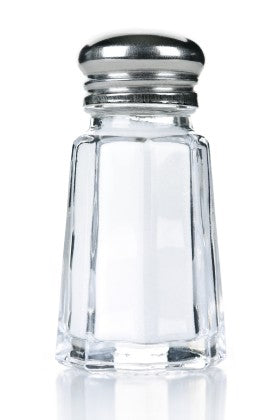 #1 - Table Salt - 2,325 milligrams per one teaspoon (6 grams)
#1 - Table Salt - 2,325 milligrams per one teaspoon (6 grams)
While table salt is not technically a food, it's one of, if not the best natural source of sodium on the planet. Just one teaspoon of table salt contains zero calories but 2,325 milligrams of sodium. [4]When shopping for table salt be sure to select the iodized variety. In the past few years, the general population has avoided iodized table salt in favor of non-iodized sea salt varieties. While both forms of salt provide sodium, iodized salt provides iodine, a critical nutrient for normal thyroid function.
#2 - Baking Soda - 1,259 milligrams per one teaspoon (4.6 grams)
Most of us only think of baking soda as being useful for removing stains, combating and upset stomach, and cooking. it's a great source of sodium that also enhances physical performance through bicarbonate's ability to buffer lactic acid production and lower blood acidity during exercise. Baking soda is most effectively dosed in the 200 to 300 milligrams per kilogram of bodyweight range 60 to 90 minutes prior to exercise. [5]For a 180-pound individual, this equates to approximately 16.5 to 24.5 grams of baking soda. This is a large quantity of baking soda and many experience laxative effects which such a large dose so slowly increase the dosage and stay close to a bathroom as your body acclimates to the substance.
#3 - Dried and Salted Jellyfish - 2,810mg per one-half cup (29 grams)
Jellyfish stings are one of the most uncomfortable risks associated with visiting the beach and swimming in the open ocean. Jellyfish is not commonly eaten in the United States, but when prepared correctly, has a light flavor and provides an ample amount of sodium for virtually zero calories.One-half cup of dried and salted jellyfish provides 2,810 milligrams of sodium but contains only 10 calories, zero carbohydrates, less than 0.5 grams of fat, and 1.6 grams of protein. [6] Look for this product at your local ethnic or natural foods grocery stores.
#4 - Soy Sauce - 989 to 1,005mg per 1 tablespoon (16 grams)
One of the most delicious condiments that effortlessly complements most Asian dishes. Soy sauce goes great with sushi, stir fry, poultry, beef, and add flavor to plain ol? rice. One tablespoon of soy sauce made with soy and wheat provided 989 milligrams of sodium, 10 calories, 1.5 grams of protein, less than one gram of carbohydrates, and virtually zero fat. [7]Those with a gluten allergy or intolerance should stick to tamari, a soy sauce made only with soy, that provides 1,005 milligrams of sodium, 11 calories, 1.9 grams of protein, one gram of carbohydrates, and zero fat per tablespoon. [8] Soy sauce also contains electrolyte minerals magnesium, potassium, and calcium.
#5 - Condensed Black Bean Soup - 2,493 milligrams per one cup (257 grams)
There's nothing like a hot bowl of soup to warm the body on a frigid day. Unlike the other sources recommended thus far, condensed black bean soup also contains a nice dose of protein, carbohydrates, fiber, and calories.One cup of condensed black bean soup provides a whopping 2,493 milligrams of sodium as well as 234 calories, 12.4 grams of protein, 3.4 grams of fat, 39.6 grams of carbohydrates, and a whopping 17.5 grams of fiber. [9] Combine your black bean soup with rice to create a complete protein source that aids in recovery after an intense workout.
#6 - Extra Lean Ham - 1,1177 milligrams per 3 ounces (85 grams)
Cured meats are typically packed with sodium which is great news for athletes looking to replenish their sodium levels quickly. Three ounces of cured and roasted boneless pork, also known as ham, provides 1,177 milligrams of sodium, 140 calories, 6.5 grams of fat, less than one gram of carbohydrates, and almost 19 grams of muscle-building protein. [10]You can't go wrong with a ham, cheese, and mustard panini after a brutal weightlifting session.
#7 - Pickled Eggplant - 2,277 milligrams per 1 cup (136 grams)
Pickled foods are an excellent source of sodium because they are physically soaked in saltwater, also referred to as brine. Eggplant tends to be a polarizing vegetable, either you absolutely love it or absolutely hate it.Pickled eggplant is a superstar when it comes to sodium content. Just one cup provides a hefty 2,277 milligrams of sodium for just 67 calories, 1.2 grams of protein, less than one gram of fat, 13.3 grams of carbohydrates, and 3.4 grams of fiber. [11] Making pickled eggplant yourself is extremely easy, safe, and inexpensive.
#8 - Grated Parmesan Cheese - 1,023 milligrams per 2 ounces (57 grams)
I think I speak for most when I say there's no such thing as too much parmesan cheese on just about every Italian dish and type of salad. Two ounces of grated parmesan cheese is packed with 1,023 milligrams of sodium, 356 milligrams of phosphorus, and 484 milligrams of calcium.It also contains 238 calories, 16.1 grams of protein, 15.8 grams of fat, and 7.9 grams of carbohydrates. Adequate phosphorus and calcium consumption is critical for maintaining bone health and fighting osteoporosis.
#9 - Canned Jalapeño Peppers - 1,738 milligrams per 1 cup sliced (104 grams)
If you want to add a low-calorie and high sodium vegetable with a kick to your diet, then canned jalapeños are the perfect food for you. One cup of canned and sliced jalapeños, including both the solids and liquids, offers 1,738 milligrams of sodium, 201 milligrams of potassium, 28 calories, one gram of protein, one gram of fat, 5 grams of carbohydrates, and 2.7 grams of fiber. [12]Jalapeños taste great on pizzas, nachos, mixed into cornbread, and incorporated into rice dishes.
#10 - Pickled Cucumbers - 1,872 milligrams per 1 cup (155 grams)
Rounding out our list is another pickled cucumber, more commonly known as a pickle. Like all pickled foods, the cucumbers are placed in a brine bath and then sealed with an airtight lid. The result is a crunchy pickle low in calories and high in sodium.One cup of pickles provides 1,872 milligrams of sodium for just 17 calories, 0.5 grams of protein, less than 0.5 grams of fat, 3.5 grams of carbohydrates, and nearly 2 grams of fiber. [13] The brine the cucumber soaks in is commonly consumed by athletes to prevent or stop muscle cramps due to its high sodium content.
What is your favorite high-sodium and minimally processed food? Let me know in the comments below!
References
1) "Sodium." MedlinePlus, U.S. National Library of Medicine, 12 Jan. 2017, Accessed Jan. 2017.2) "Fluid and Electrolyte Balance." MedlinePlus, U.S. National Library of Medicine, 21 Dec. 2016, Accessed Jan. 2017.
3) Bates, Graham P, and Veronica S Miller. ?Sweat Rate and Sodium Loss during Work in the Heat.? Journal of Occupational Medicine and Toxicology (London, England) 3 (2008): 4. PMC. Web. Jan. 2017.
4) "Basic Report: 02047, Salt, table." National Nutrient Database for Standard Reference Release 28. United States Department of Agriculture, May 2016. Web. Jan. 2017.
5) Frank, Kurtis, et al. "Sodium Bicarbonate - Scientific Review on Usage, Dosage, Side Effects." Examine.com, 2017, Accessed Jan. 2017.
6) "Basic Report: 43497, Jellyfish, dried, salted." National Nutrient Database for Standard Reference Release 28. United States Department of Agriculture, May 2016. Web. Jan. 2017.
7) "Basic Report: 16123, Soy sauce made from soy and wheat (shoyu)." National Nutrient Database for Standard Reference Release 28. United States Department of Agriculture, May 2016. Web. Jan. 2017.
8) "Basic Report: 16124, Soy sauce made from soy (tamari)." National Nutrient Database for Standard Reference Release 28. United States Department of Agriculture, May 2016. Web. Jan. 2017.
9) "Basic Report: 06002, Soup, black bean, canned, condensed." National Nutrient Database for Standard Reference Release 28. United States Department of Agriculture, May 2016. Web. Jan. 2017.
10) "Basic Report: 10183, Pork, cured, ham, boneless, extra lean and regular, roasted." National Nutrient Database for Standard Reference Release 28. United States Department of Agriculture, May 2016. Web. Jan. 2017.
11) "Basic Report: 43146, Eggplant, pickled." National Nutrient Database for Standard Reference Release 28. United States Department of Agriculture, May 2016. Web. Jan. 2017.
12) "Basic Report: 11632, Peppers, jalapeno, canned, solids and liquids." National Nutrient Database for Standard Reference Release 28. United States Department of Agriculture, May 2016. Web. Jan. 2017.
13) "Basic Report: 11941, Pickles, cucumber, sour." National Nutrient Database for Standard Reference Release 28. United States Department of Agriculture, May 2016. Web. Jan. 2017.

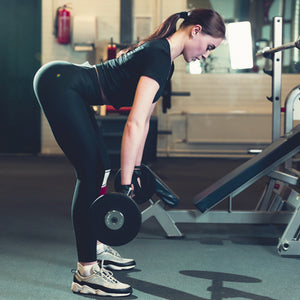

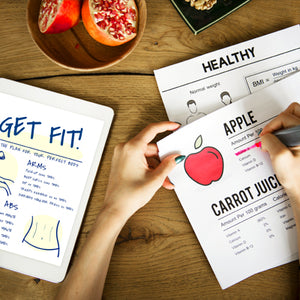
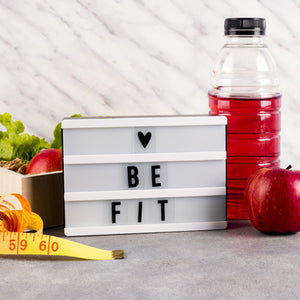


 #1 - Table Salt - 2,325 milligrams per one teaspoon (6 grams)
#1 - Table Salt - 2,325 milligrams per one teaspoon (6 grams)